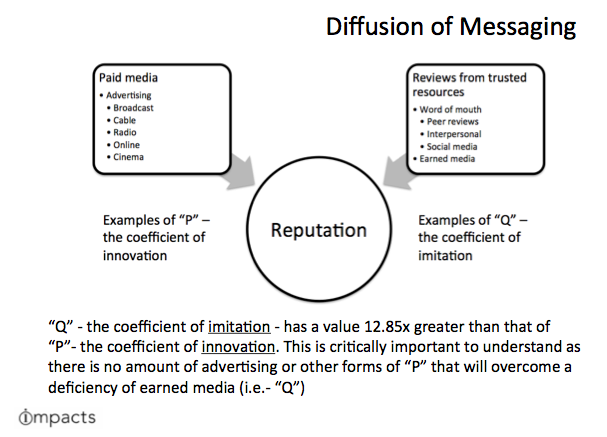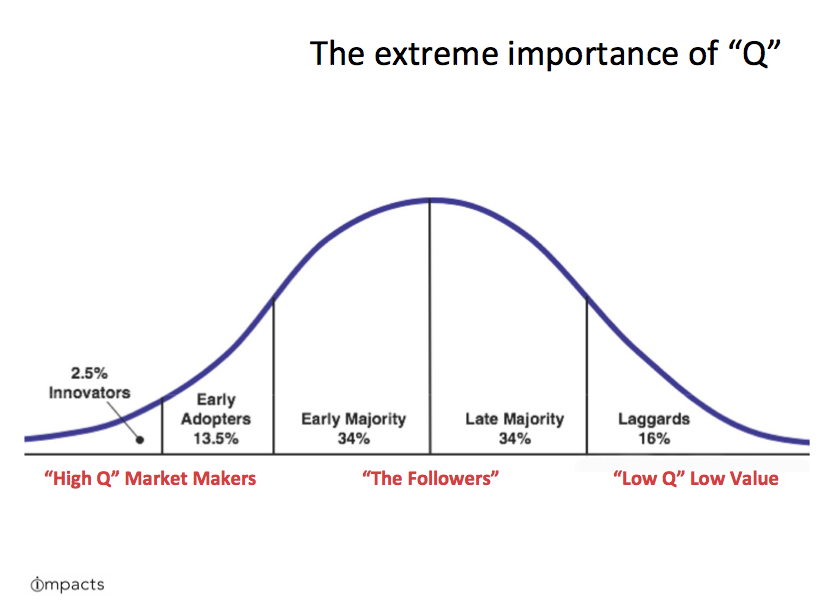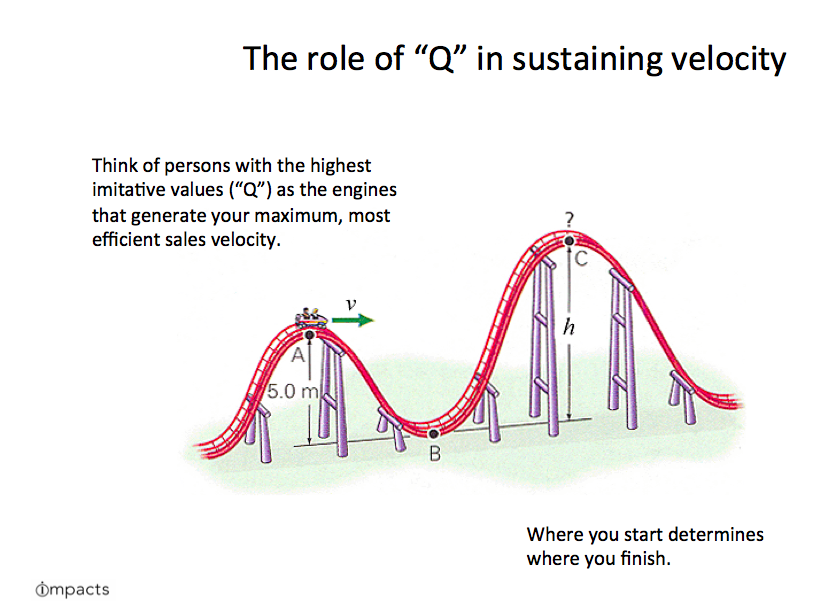Nonprofit marketers increasingly understand the importance of reach and remaining top-of-mind when it comes to building affinity with potential visitors and donors in the digital era. In a perfect world – one with unlimited resources – we would simply throw money at our marketing channels until everyone heard our message. However, in the real world of finite marketing budgets, many organizations mistakenly target the broadest swath of their market under the misguided notion that maximizing marketing efficacy depends on a “target the majority” strategy.
Instead, the modern nonprofit should understand that the number of people who see your message (i.e. how many) is significantly less important than the imitative value of the people who see your message (i.e. who).
Savvy marketers understand the critical importance of targeting “Market Makers” (as opposed to the broader market) to efficiently generate and sustain sales velocity…and the reasoning behind this strategy is undeniable.
As a friendly heads-up: I’ll warn you all that this post is a little wonkish (bear with me!), but for those of us who don’t have a degree in economics, here’s the play-by-play from an English major with a master’s degree in public administration (read: not math) who gets to see these items in action every day in her work with IMPACTS.
1. No amount of paid media (“P”) overcomes a lack of reviews from trusted sources (“Q”) when it comes to elevating reputation, driving attendance, or securing donations
This model (which I’ve shared before) also demonstrates how dramatically marketing has changed in the last twenty years. Paid media (“P”) used to be the fastest way to reach the most people. Now – thanks to technology – we have more real-time access to reviews from trusted resources (“Q”) than ever before…and the ability to promulgate these views with the press of a touchscreen.
While some organizations seem to be afraid of harnessing the power of “Q“, sophisticated organizations may view this shift as one of the best things happening in the marketing world. We’ve flipped the influence potential from outlets controlled by third-party publishers and broadcasters to one primarily influenced by our own relationships with our audiences! Now, marketers have the opportunity to reach people and foster relationships via a much more effective and influential method (i.e. word of mouth from trusted sources).
2) Certain people have higher “Q” values than others (and thus serve as more trusted resources for spreading your message)
We all have a friend who, when they make a recommendation, we listen. These are the friends whom we consider to be “in-the-know.” They’re the first ones to go to the new, cool restaurant, and the first to sport the season’s best fashion. In marketing-speak, they have a high “Q” values (AKA “high imitative values”). Like positive reviews in The New Yorker or The New York Times, reviews from these high “Q” value folks can make a world of difference for an organization. These folks are likely your “Market Makers” – the trend-starters and experts that get your organization’s ball rolling…and keep it in motion.
Similarly, we probably all have a friend (erm…or two) who, when they make a recommendation, we smile and nod but won’t touch that product with a ten-foot-pole. These people have low “Q” values and, unfortunately, many organizations target these folks just as much as high “Q” folks with their broader marketing strategies. Worse yet, without endeavoring to identify and target “Market Makers,” an organization may be wasting valuable resources on “Laggards” who only adopt a product when it is on the precipice of being passé.
3) The “Q value” of the individuals you target determines the “velocity” of your message (how sustainable it will be over time)
Imagine the adoption model above as a roller coaster. Now imagine that your organization’s goal is to engage the maximum amount of the audience. As anyone who has screamed their lungs out while plunging down the big hill surely knows, the higher up the roller coaster starts, the more velocity the roller coaster has available to propel itself up and over other obstacles. If the ride starts at a height that is insufficient, the cart will not have the requisite velocity to reach its desired destination (i.e. your maximum audience).
In other words, if you start your marketing effort by “marketing to the middle” (i.e. the early majority), then the models suggest that your efforts will only gain the necessary velocity to carry your message through the late majority. Sure – this strategy stands to reach 68% of the audience…but it ignores the most influential Market Makers who promise long-term relevance and sustainability. Perhaps this explains why many visitor-serving organizations have essentially flat-lined their levels of visitation in spite of growing populations levels.
Bottom line: To increase reach and promote your brand most effectively, it is critical that your nonprofit targets Market Makers.
The web and social media allow for personalization. Taking the time and energy to identify and target high “Q” individuals (content creators, online critics) is among the most efficient, impactful, and valuable type of market research available to an organization.
Does this mean that the only folks who should matter in your nonprofit marketing strategy are Innovators and Early Adopters? Of course not. Your organization must be ready to engage other audiences, as that is – of course – the goal of targeting Market Makers: To leverage their imitative behaviors to help you reach broader audiences.
Clearly, not all online audiences are of equal value, yet organizations regularly (lazily?) develop strategies for their online audiences as if they were a single, homogenous constituency. This is akin to developing “a targeted strategy for all things that breathe.” It is time for organizations to think of their online audiences with the same degree of segmenting sophistication that they lend to donors. Identifying your Market Makers, targeting these highly influential persons with your messaging, and trusting their imitative values to amplify your message to the balance of the market are the hallmarks of an efficient and effective marketing strategy.
Who knew that your mother was such a prescient marketer when she told you to mind your Ps and Qs? (Sorry, guys. I had to…) 🙂
IMPACTS Experience provides data and expert analysis to many of the world’s leading organizations through its workshops, keynote presentations, webinars, and data services such as pricing studies, market potential analyses, concept testing, and Awareness, Attitude, and Usage studies. Learn more.
We publish new national data and analysis every other Wednesday. Don’t want to miss an update? Subscribe here to get the most recent data and analysis in your inbox.




